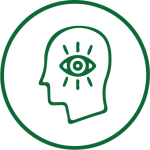Exploring Human Values Teaching Techniques
At Sathya Sai College we use seven recommended teaching techniques,
which provide the full range of learning activities and embrace body, mind and spirit.

Mind-Mapping
Outcome:
connection, concentration, creativity
Mind mapping the values from brainstorming or the picture of the lesson’s context. They are creative thinking tools that reflect our brains natural way of functioning.
A. Benefits: mind maps can help us to:
• Plan
• Communicate
• Be more creative
• Save time
• Solve problems
• Concentrate
• Organise and clarify points
• Remember better
• Study faster and more efficiently
• See the whole picture in context
• Save trees!
B. Mind maps crack creativity as they:
• activate your whole brain
• clear your mind of mental clutter
• allow you to focus on the subject
• help demonstrate connections between isolated pieces of information
• allow you to group and regroup concepts, encouraging comparisons
• require you to concentrate on your subject. Which helps get the information about it transferred from your short term memory to your long-term memory
C. To create a lesson plan we can start with a mind map to brainstorm values with students and create a connecting context for the lesson.From the mind map or memory map, teachers can select the concept appropriate to the age and educational maturity of the children via the syllabus outcomes. We develop lesson plans from these outcomes.

Silent Sitting
Outcome:
to quieten and focus the mind;
going into the heart for approval
Benefits:
- Calms the mind and improved receptivity
- Improves concentration and focus and facilitates learning, memory, retention
- Develops self-confidence due to clear mind, uncluttered and steady
- Improves self-discipline, single-mindedness and determination
- Improves capacity to regulate moods
- Enhances moral judgement, problem solving, capacities of negotiation & refusal
- Focussing the mind on light enhances the ‘other-centred’ drive (compassion etc)
- Enhances intuition as the mind is calm and can access inner sources of wisdom
EHV requires that the child learns to harness the energy of the mind to become calm, concentrated and focused. Control of thoughts arising from the sub-conscious brings emotions under control so that any situation can be perceived objectively. A calm mind is essential for learning; absorption and understanding of lessons and values are more thorough.
Using light to quieten and focus the mind
Imagine a bright light in the middle of your chest. It is becoming brighter….and brighter. You notice that it is becoming brighter and pushing out all darkness and with it all feelings like anger, sadness and upsets. As the negative feelings leave you, you feel warm, gentle, happy and peaceful.
Now your whole body is filled with the bright light which is very….soothing. Notice how the light fills your whole body, head, and neck, arms, down to the tip of your fingertips, chest, tummy, legs, and right up to the toes. You are radiating rays of light which are carrying joy, fun, kindness, happiness and peace. You are feeling bright and happy. Whatever and whoever comes in touch with you, your rays fill them with bright and happy light. Everyone and everything around you is filled with joy and peace with the light that has come from you.
Sit quietly feeling the joy and peace…when you are ready open your eyes. Smile quietly; feeling the peace and joy…when you are ready open your eyes. Smile and gently stretch yourself.

Quotes & Affirmations
Outcome: to heighten awareness of the operation of a value and sub-value
Quotations, affirmations and prayers are statements of profound truth and wisdom. They set the tone for the lesson and fortnight during which the value is the focus.
It is now well recognised that positive thoughts give rise to positive emotions. Positive emotions in turn have been shown to result in optimism and in building mental and emotional resilience against anxiety, depression and anger. There is evidence (Seligman 2002) that those who have positive emotions live longer, are less stressed and have less illness and disability.
Quotations, affirmations become embedded in the sub-conscious from where they influence thoughts. Thoughts…Actions…Habits…Character…Destiny! They focus the attention of the child on a significant aspect of the sub-value and its importance in life. Thus they heighten awareness of the operational aspect of the sub-value.
Benefits of affirmation as a technique
- Gives the wisdom of the message in a short punchy manner
- Opens the child’s mind to his/ her own possibilities
- Encourages positive thinking
- Develops memory as well as the language of values
- Encourages positive behaviour
Benefits of Quotations as a technique
- Develops memory as well as a language of values
- Develops understanding of application of the value
- Improves concentration and sharpens focus
- Encourages positive thinking, positive emotions and optimism
- Encourages intra-personal, interpersonal and spatial intelligences
- Sharpens intuition, moral judgement and moral reasoning
- Encourages positive behaviour often involving self-control
- Enhances capacity to delay gratification as it charts a preferred course of action
- Encourages tranquillity, flexibility of mind and purposeful activity

Storytelling
Outcome:
to paint a mental picture of characters, situations, moral dilemmas and resolutions that enables a student to relate to the context of a value
Storytelling is an ancient method of conveying values, wisdom and traditions. Story paints a mental picture of characters, situations, moral dilemmas and resolution. In this way a child is able to relate to the context of the values. This creates sensitivity to societal norms, expectations, acceptable attitudes and standards of behaviour.
Benefits of storytelling:
- Capture child’s interest and imagination
- Recapture real life situations
- Create models of operational behaviour
- Give knowledge of strategies that may be used to solve problems
Characteristics of good values stories:
- Short stories with limited number of characters
- The story should create a situation that is relevant to the child’s life
- The resolution of the moral dilemma in the story should be clear so that the value or sub-value is firmly imprinted on the heart of the child
- The story should be told rather than read, with all the emotions and intonations
- Stories should be considered carefully for their message, content, values, faith, social harmony, trust, optimism etc. There are good models for such virtues within all cultures and the reverse is also true.
Storytelling as a technique requires:
- Story has shape, plot, sequence and a flow— visualise for recall
- Small numbers of characters make the story most impactful
- No one way is right way to tell a story
- Brief global introduction: beginning and end are the most important parts
- Story should be short
- Develop your capacity to give it a sense of place: textures, flavours, sights, smells etc.
- Experiment with standing. Sitting, using hands, faces, body effect
- Children sitting in a semi-circle creates an atmosphere of intimacy
- The part of the brain that imagines is not the part that remembers’ language and imagination use different brain functions
- Language must be appropriate to the age level of comprehension of children

Group Singing & Music
Outcome:
to infuse students with inspiration and engage all of each person’s multiple intelligences, cognize all cortical areas of the brain restore balance, harmony and health and develop a spirit of unity and teamwork
Music develops ‘musical’ intelligence and all of the other intelligences at the same time.
Group singing and music have been used since ancient times to enact dramas, pass on information, celebrate joyous occasions and find personal fulfillment through employing creativity.
Music has also been used for healing, restoring physical and mental balance, sublimating emotions and as a mode of devotional worship.
Music & group singing impacts on many levels and has many benefits for teaching:
1. Increases vitality and relieves tiredness
2. Changes moods and calms anxiety
3. Develops concentration
4. Improves learning and memory
5. Develops intuition
6. Develops creativity
7. Enhances self-confidence, particularly overcomes shyness
8. Develops all 9 intelligences including musical skills
9. Focuses on a sub-value as a worthy aim
Keep it short and sweet, around 10 minutes; teaching a new song, listening and recording, changing the state in a room, refreshing and makes a good combination with silent sitting.

Group Activity
Outcome: to elicit from each child, the dynamics of values, conveyed through social interaction and so deepen their understanding of the values and how it is put into practice
Benefits: Each child develops:
1. Deeper understanding of values through experiential learning
2. Confidence, initiative, self-reliance, self-discipline
3. Understanding, co-operation, sharing, helpfulness and tolerance of others
4. Concentration
5. Creativity
6. Leadership skills
7. Assertiveness, refusal skills
8. Negotiation and conflict resolution skills
9. Intra and Interpersonal intelligences

Creative Visualisation
Outcome: to cultivate and balance imagination that releases positive creativity and LOVE
When we recall the past or imagine future events we think in images. Dreams too are made of images. Such images are not static as in a photograph; they have movement, sound, touch, smells and taste although visual and auditory images are the most common.
When we imagine the future or recall the past and evoke images they are associated with appropriate bodily changes e.g., in a nightmare our heart rate goes up and we generate a strong emotion of fear.
In anxiety states we have highly developed negative images of the future. Negative states of anxiety, fear and terror can be overcome by strongly formed visual images, which are associated with positive emotions. It is important to realise that when we hear a narrative real or imaginary, a series of images are formed in our minds. A well told narrative has power to form strong images and evoke appropriate emotional responses in the listener. We have varying capacity to visualise images.
Benefits of Creative visualisation
1. Enhances understanding of values, their operation and the good feelings they generate
2. Enhances empathy and social skills
3. Enhances spatial and intra-personal intelligences
4. Enhances imaginative skills and creativity
5. Enhances capacity to control impulsivity
6. Enhances self-image and capacity to visualise success
7. Enhances control over negative emotions e.g. capacity to regulate emotions
8. Increases optimism
9. Enhances determination, perseverance in face of difficulties and set-backs as well as self-management skills
Did you know that…?
The cells that fire in creative visualisation are the same that are active during the activity envisaged in creative visualisation i.e. the creative visualisation is equivalent to the actual experience in neurological terms? It is just as successful as the real experience in creating neural pathways!
It is known that in depression the ratio of negative to positive thoughts is equal. In optimism the ratio is more in favour of positive thoughts. Creative visualisation enables this shift in ratio by increasing positive thoughts.
Steps:
1. Focus activity (breath, light, music, relax one minute).
2. Begin with “Imagine”… so that you set the mood and provide choice
3. Highlight the benefits of using the value, for the child and others.
4. Closure: stay with feelings for a while, open eyes and stretch.
5. Visualisation should be a reasonably sized paragraph, shorter for younger children.
